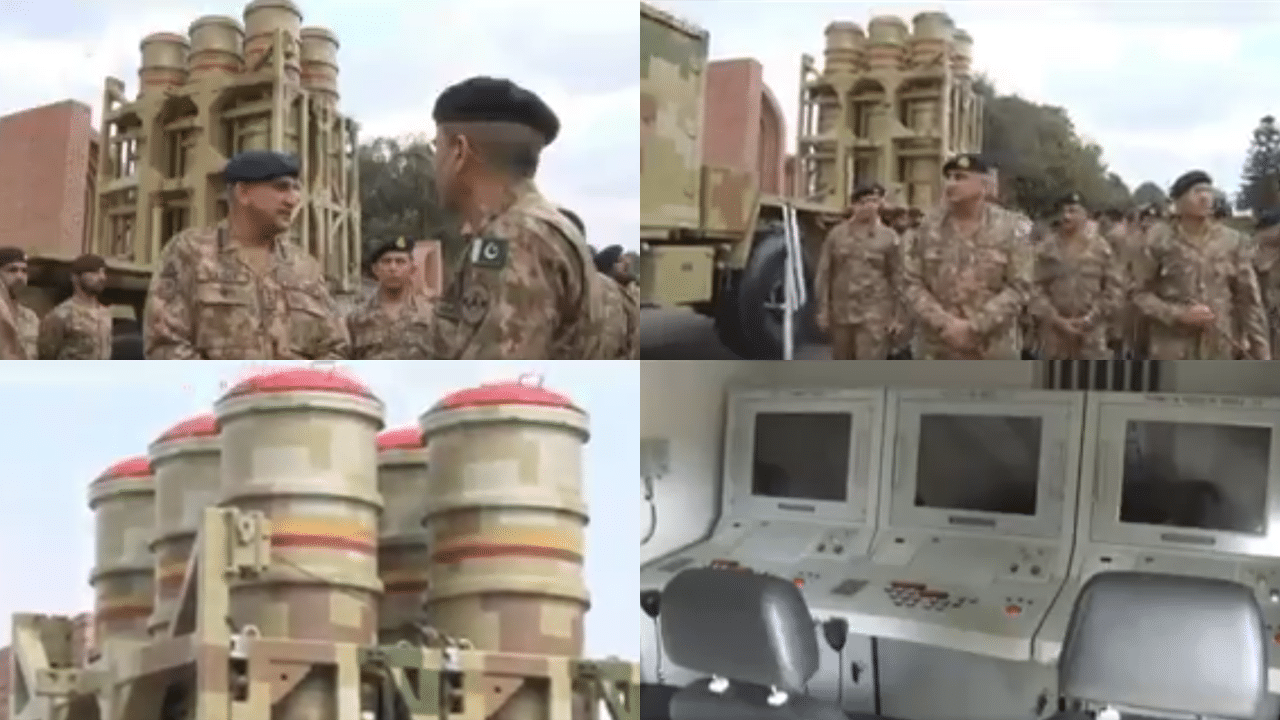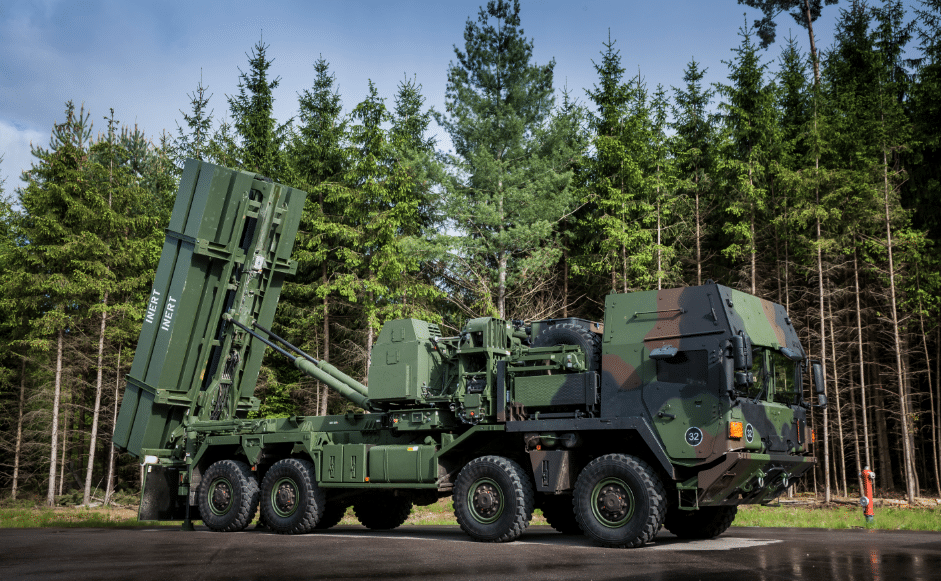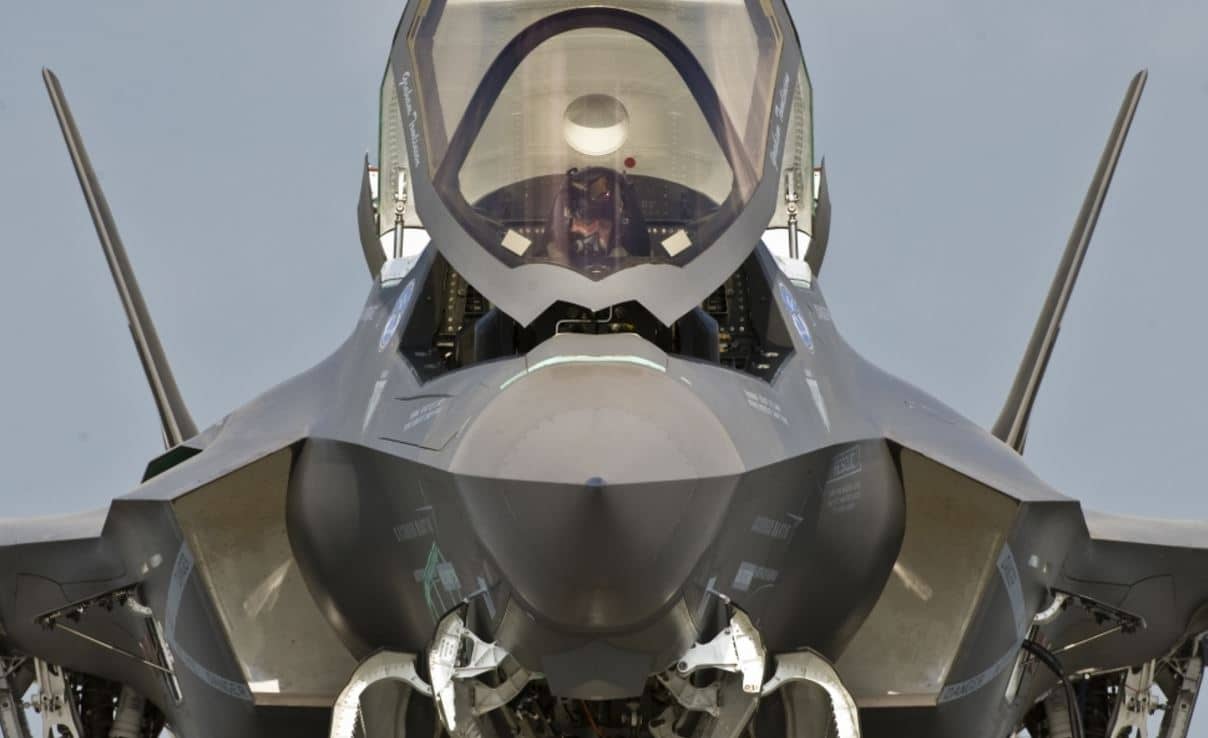443Views 15Comments

Pakistan formally inducts LY-80 (HQ-16) air defence system
The Pakistan Army formally inducted the LY-80 (HQ-16) medium-range surface-to-air missile (SAM) system on 12 March 2017.
In an official press release, the armed forces’ media arm Inter Services Public Relations (ISPR) states that the LY-80 “is a Chinese mobile air defence system, (sic) capable of tracking and destroying variety of aerial targets at longer ranges flying at low and medium altitude.” The HQ-16 is produced by China Precision Machinery Import and Export Corporation (CPMIEC).
As per Army Recognition, the HQ-16 has a maximum range of 40 km and is capable of engaging targets at an altitude of 400 to 10,000 metres. The HQ-16 system comprises of an IBIS-150 3D target-search radar, a solid-state S-band passive electronically-scanned array (PESA) radar with a range of up to 150 km, multiple L-band tracking and guidance PESA radars, and six-cell vertical missile-launchers. Each L-band tracking radar has a range of 85 km, and can detect up to six targets, of which it can track four. An HQ-16 battery comprises of a tracking radar and four missile launchers.
It should be noted that China Aerospace Long-March International (ALIT), a privately-owned defence firm responsible for marketing Chinese defence goods and securing sales, states that the LY-80 has a maximum range of 70 km. It appears that the improved HQ-16B is available for export, and this may be – or become – a factor in the Pakistan Army’s air defence development plans.
Notes & Comments:
Pakistan made at least two separate HQ-16 orders. As per the Pakistan Ministry of Defence Production’s (MoDP) disclosure, Pakistan ordered three HQ-16 systems and eight IBIS-150 radars in 2013-2014 for USD $225.77 million and $40 million, respectively. This was followed up in 2014-2015 with a $373.23 million order for six additional HQ-16 systems.
Although the number of launchers in use in each Pakistani HQ-16 SAM system is not known, it is evident that the HQ-16 has become the armed forces’ mainstay medium-range SAM system. Alongside the newly inducted FM-90/HQ-7 command-line-of-sight short-range SAM, the Pakistan Army has formed a complete low-to-medium-range air defence system (LOMADS).
To complete its air defence network, Pakistan has been seeking a long-range SAM system. The CPMIEC HQ-9’s export variant, the FD-2000, appears to be the likeliest option. The FD-2000 has a range of 125 km. However, a high-level Pakistani official reportedly told the Russian news agency RIA Novosti that Pakistan was also interested in Russian SAM systems, particularly the S-400. Fiscal limitations and uncertainty will likely compel Pakistan to address its long-range SAM requirements in collaboration with China.



15 Comments
by Matthys Jacobs
I must admit I am disappointed that Denel did not try and get Pakistan to consider the Umkhonto as a medium range air defence system.
It’s two current variants being the IR (range of 20 km’s) and EIR (range of 35 km’s) and it’s proposed radar guided variant (range of 60 km’s) would have been an excellent opportunity for South Africa and Pakistan to develop a closer relationship
by Sami Shahid
After completing a low-to-medium-range air defence system now Pakistan should buy new F-16’s to replace with the obsolete ones. For sure Pakistan can buy 8 F-16’s on its own.
by syed
I was listening to a US senator a few days ago…and he said Aircraft Carriers are obsolete and he would not be caught within 50 miles of one……so missiles are the future and Pakistan would do well to spend mpst of its defense budget there
by bill
dear I am afraid that even 35 km version is also in testing phase and only so far IR version is available. However perhaps PN will consider Umkhonto in near future with purchase of new corvettes.
by Bilal Khan
The flipside of the Denel route might have been some access to dual-pulse rocket and missile thrust-vectoring technology. There are trade-offs. In this case, the Army went for a low-risk and ready-to-use solution, one that will probably be augmented (e.g. with the 70 km HQ-16B). But it would be interesting if the Navy and Air Force consider a holistic development route with Denel. The A-Darter and Umkhonto EIR could be procured in the short and medium-term, respectively, and the Umkhonto-R and Marlin BVRAAM over the long-term.
by Khalid Riaz
We have had HQ-16 since 2013-14. What is the significance of announcing its formal induction now? @Bilal?
by Bilal Khan
The HQ-16s were actually ordered in 2014. The Army started receiving them through 2015 and 2016, during which it was integrating them into its air defence system. The recent announcement was a formality and confirmation that the system is fully operable.
by OSD
This reminds me of the BAC TSR-2 and how it was cancelled by the 1957 white paper of the British government. That philosophy was immediately discredited and the British rued the day they had adopted it. The Americans will probably avoid it as well.
by OSD
We can, but why should we? For one thing, it is a common thing to get discounts in the aviation industry and so it doesn’t make sense to pay the list price on an over priced system. Secondly, unless the F-16s are heavily discounted, the same resources can be invested on other weapons which are completely under our control and not subject to conditions.
by bill
Sir r u sure it’s HQ16B
by Bilal Khan
I didn’t say the system today is HQ-16B, I said HQ-16B could be coming in the future.
by SYED
the aircraft carrier might be good against second tier states like Iraq and Syria but not against China ,Russia or even french……now which segment do we belong and which one should we strive to be
by Khalid Riaz
Thank you.
by OSD
The aircraft carrier was considered as a second rate machine before WW2 as well, but it was the decisive weapon against the super powers of that time. The Americans completely disposed of their gun turrets but had to bring back the Iowa class battleships to bombard Vietnamese coastal targets. The British faced that same problem of having no gun turrets in the Falklands war because they had also thought the gun turrets were obsolete and missiles were the weapons of the future.
These miscalculations have been done many times in the past and are being done by those who are deriding the utility of these weapon systems today. One must remember that all of the different weapons combine to over power an enemy and this is all the more important if the enemy is as well equipped as the major powers of today.
I don’t think we belong to any of these segments as we neither own an aircraft carrier nor are we threatened by an aircraft carrier. For one thing, we are in a very strong position on the international stage as the first ally of China. Secondly, Pakistan is well equipped with defense systems to protect its coastal areas.
So the point is that we don’t need to feel ashamed of which segment we are in and we don’t need to panic about entering another segment.
by Wallfacer Manuel Redias
it is Strategic misleading . in cold war era, usa said missile make Aircraft Carriers outdate. naive russian believe them,so russia developing Nuclear submarine。but usa go on developing super Aircraft Carriers and controls almost Marine Strategic Access 。 dont believe them words, look what them done. usa now developing Ford super Aircraft Carriers . in fact, china had also cheated by usa . a discussion of Whether to develop the aircraft carrier long for 20 years, when china Recognized the scam of the United States ,and china decided to manufacture aircraft carrier,The United States uses all means to obstruct